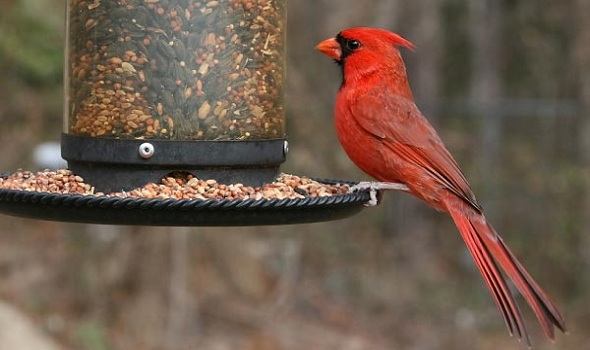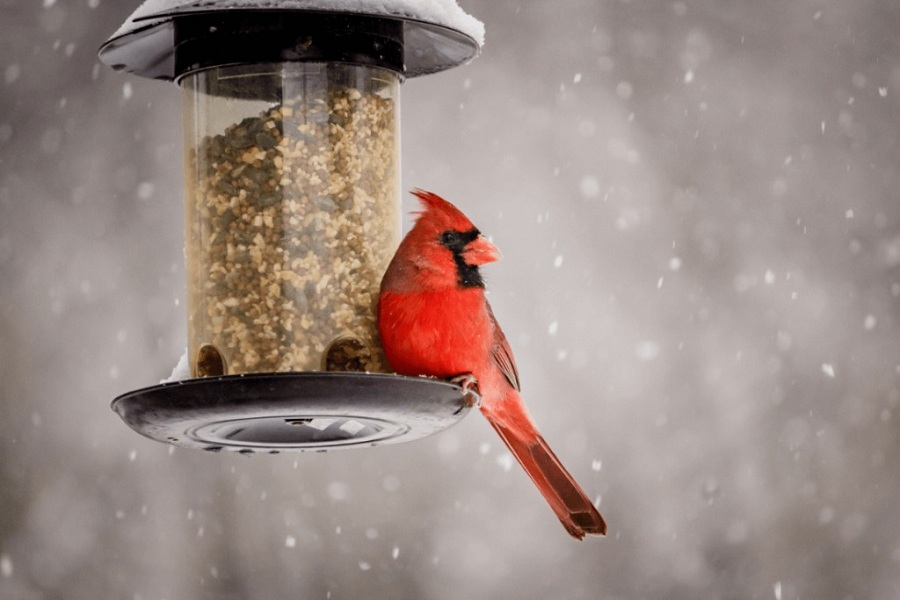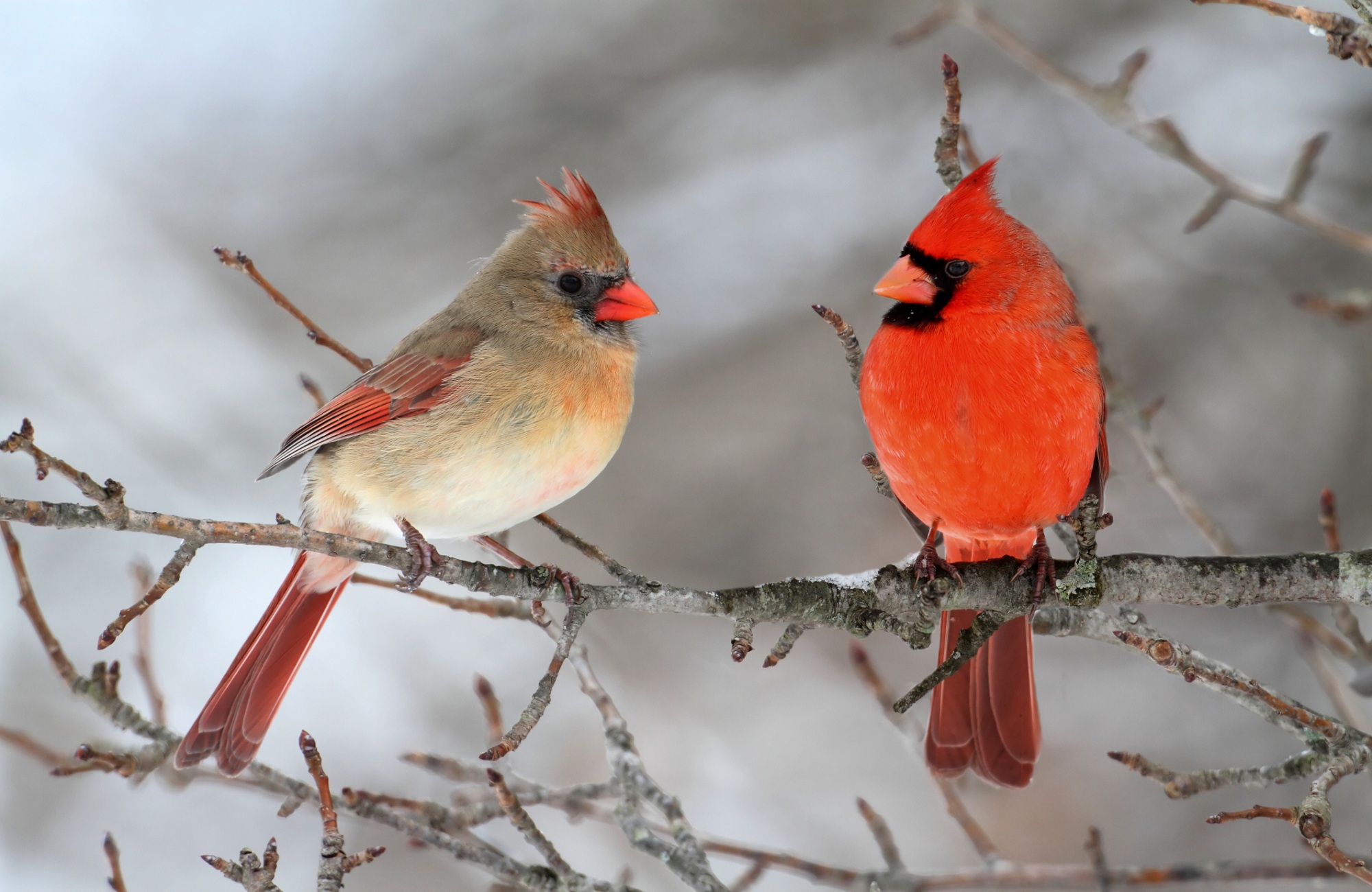Many people in the north are cheered to see a vibrant cardinal in their yard during the dark, dreary winter months. There’s a reason why so many people go to great lengths to attract cardinals: they’re thought to bring good fortune and loyalty to their owners.
Most populations of northern cardinals can be found in the aforementioned regions of the United States (Northeast, Midwest, South, Southeast, and Southwestern), as well as in Mexico and Central America. They are so widespread that even the southernmost parts of Canada have some.
Because they don’t migrate, cardinals are easy to see in the winter, especially against a white background of snow. In order to entice cardinals to visit your backyard, consider the following tips.
Understand the cardinal diet
What kind of food do cardinals typically eat? Cardinals are omnivores, consuming seeds, fruit, insects, and plant buds. During the summer breeding season, they eat bugs, especially soft-bodied insects like caterpillars, despite the fact that plants make up about 75% of their diet. If you want to attract cardinals to a bird feeder, plant things like dill, fennel, hollyhock, snapdragons, and mustard greens that cater to butterflies.

Bring on the berries
Male cardinals get their brilliant plumage from a diet high in carotenoids found in berries and fruit like wild grapes, raspberries, and apples. Dogwood berries are another tasty food that they enjoy.
Cardinals can be attracted to your yard all year long by planting berry shrubs and fruit trees. The birds prefer low-growing shrubs because that’s where they can best forage for food. Dogwood berries are just one of many species of berry that they enjoy eating.
Other favorites include sumac, hackberry, northern bayberry, hawthorn, clematis, mulberry, rose, blueberry, grape, and serviceberry. Growing berries with large seeds provides cardinals with both fruit and seed.

Serve sumptuous seeds
Cardinals have a wide range of preferred foods, but seeds are a particular favorite. Their beaks are curved inward, making it easier for them to crush and crack open seeds.
In the dead of winter, when insects are scarce, cardinals can get the protein they need from black oil sunflower seeds, which also provide extra oils and fats. Similarly to sunflower seeds, safflower seeds are a good resource for oils and carotenes. Peanuts, nyjer (thistle), cracked corn, striped sunflower, and sunflower hearts are some of the other seeds and feeds that cardinals enjoy.
Mealworms and suet are also good sources of protein, and the extra calories they provide will keep their metabolism running strong all winter.

Buy or build gorgeous feeders
One way to attract red cardinals is to provide them with a bird feeder that has a platform so they can eat while facing forward, rather than having to twist their bodies. Make sure the feeder you pick can accommodate large seeds; cardinals have stronger jaw muscles than other songbirds and can eat larger food items.
A separate suet feeder can hold two suet cakes (compressed raw fat studded with seeds, nuts, and berries).

Discourage sneaky squirrels
You should buy a squirrel-proof bird feeder if you want to avoid the problem of squirrels driving away cardinals (or eating all of their food). You can make regular cardinal feeders less accessible to squirrels by moving the pole away from trees, adding a baffle, cage, or Slinky to keep squirrels from climbing the pole, or putting up other types of obstacles. Additionally, you can try adding hot pepper to the birdseed. The birds won’t mind, but the squirrels won’t like it.

Provide predator protection
If you want to attract cardinals, think carefully about where you put your bird feeder. Feeders should be close enough to trees and bushes to keep predators away (but not so near that squirrels have easy access).
Cardinals will always be attracted to seed that has fallen from a hanging feeder and landed on the ground. Ground feeders near bushes can make these redbirds feel safe while they forage. Be sure to clear away snow in the winter so they can still access the seeds.

Incorporate fresh drinking water
Because cardinals need to drink water every day, it’s crucial to provide them with a regular supply. In order to avoid sick birds, it’s important to keep bird baths, fountains, and other sources of water clean and free of algae and germs.
Cardinals and other birds like it when water is moving. This prevents the water from freezing and is a great technique to attract cardinals during the winter. Or you might look at solar-powered bird baths, which don’t require any sort of power source and can withstand temperatures well below zero.

Keep feeders full
You should keep your bird feeder(s) full to attract birds. In order to ensure the survival of cardinals year-round, it is essential to provide them with a consistent food supply, as they do not move during the winter. Make sure feeders are stocked in the afternoon to give them a constant supply of food as they spend most of their foraging late in the day to keep warm overnight and again first thing in the morning to regain the energy they’ve lost.

Layer your landscape
Plant evergreens in your yard to give cardinals a place to hide from predators. Planting a variety of trees and plants at different heights can give birds more places to nest and more protection from the elements. Evergreens, in particular, offer all-year protection.
The basic layers of protection for these private birds are large and small trees, large and small shrubs, perennials, and ground cover. These layers not only provide protection but also serve as a source of nesting materials.

Supply natural nesting material
In the spring, you can encourage cardinals to stay and raise a family in your yard by providing them with nesting materials. Where do cardinals nest if they don’t use birdhouses? Dense shrubbery is the most popular guess. Because these birds frequently raise multiple broods each year but rarely re-use nests, they require a large supply of nesting material.
You can attract birds to your yard by providing them with a safe haven by planting shrubs, as well as by hanging a suet cage near a bird feeder, from which they can pluck pieces of yarn or pet fur to use in building their nests.


